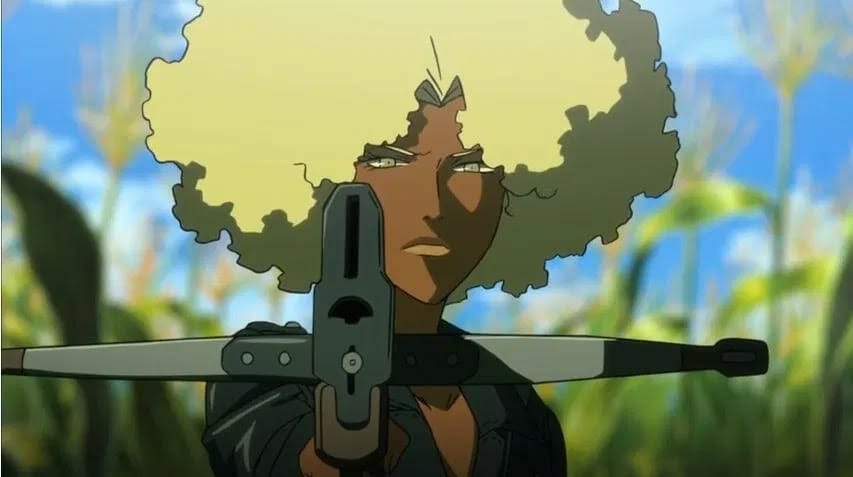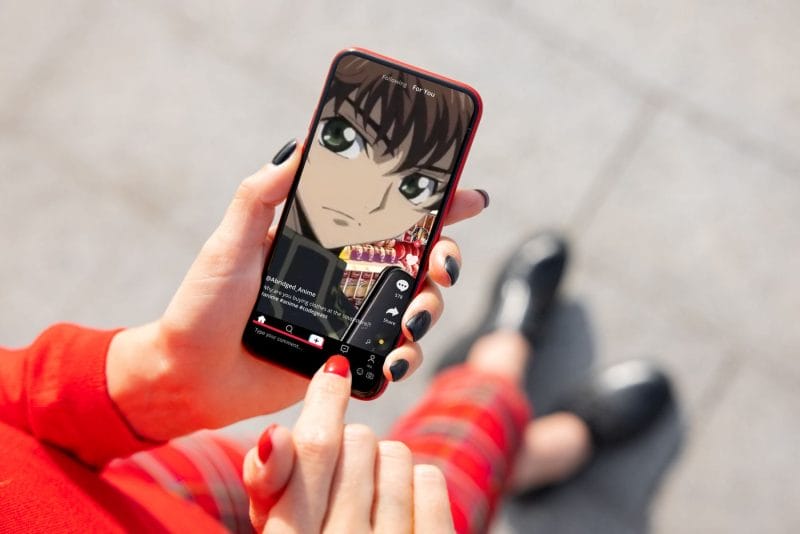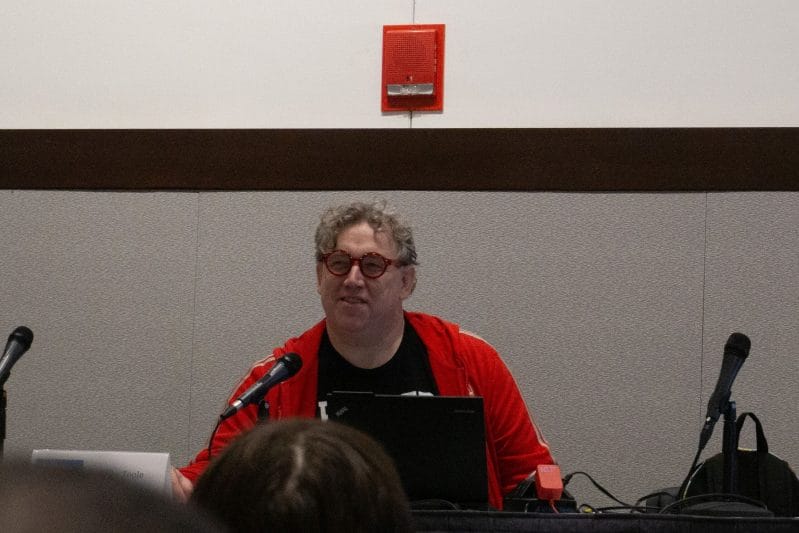When anime first hit American airwaves in the 1960s, the Japanese art form introduced audiences to worlds and characters yet to be imagined in the works of creative fiction conceived in the west. Though it would take over thirty years of consistent imports, anime (as we know and enjoy it today) would eventually grab hold of a wide swath of the American population. By the 1990s, a new, dedicated subculture would find permanent residence in the hearts and minds of anime enthusiasts.
Perhaps the draw of anime was the stylish approach to animation, which was so different than the lines and shapes seemingly recycled by American cartoon companies in the previous forty years. Or, maybe, it was the depth of emotion and range of motives possessed by the characters. Whatever the case may be, one could surmise it was almost certainly the representation of new and different types of characters that drew what would be millions (and growing) to the genre. Though the initial representation was small, the resonance that anime has found within the Black community has been impactul from the beginning.
The vast and diverse pockets of Black people that compose the core of Black anime nerdom in the United States is as exciting and as varied as the genre itself. For many Millenial Black Americans, films from Studio Ghibli, along with programming such as Cartoon Network’s Toonami block or Fox’s presentation of Sailor Moon and The WB’s licensing of Pokémon and Dragon Ball Z were the seeds that sprouted into an obsession for the shows. For our parents, films like 1988’s Akira helped anime enmesh with the culture on a larger scale. Today, there’s a steadily growing expanse of Black gatekeepers, purists, and fringe fans of Black anime fandom (a community that houses hardcore buffs such as Megan Thee Stallion and Samuel L. Jackson).
Thirty years have passed since anime’s initial boom, and it hasn’t slowed yet. Within the ever-growing fandom grows an ever-expanding demand for diversity, along with an ever-present reimagining of what the multitude of worlds and their inhabitants look like. The number of Black and POC characters starring in and supporting the storylines of popular anime releases grows more prevalent with each passing day. While some depictions still fall into more offensive stylizations of Blackness and aren’t particularly the most progressive, newer studios and creators are raising the bar. They’re changing the paradigm by infusing the truth of their experiences into the material of their wildest dreams, while making anime more inclusive and entertaining for all.
I’ve compiled a list of my favorite Black and POC characters in the genre thus far, and what their presence means to their respective canons and to fans everywhere.
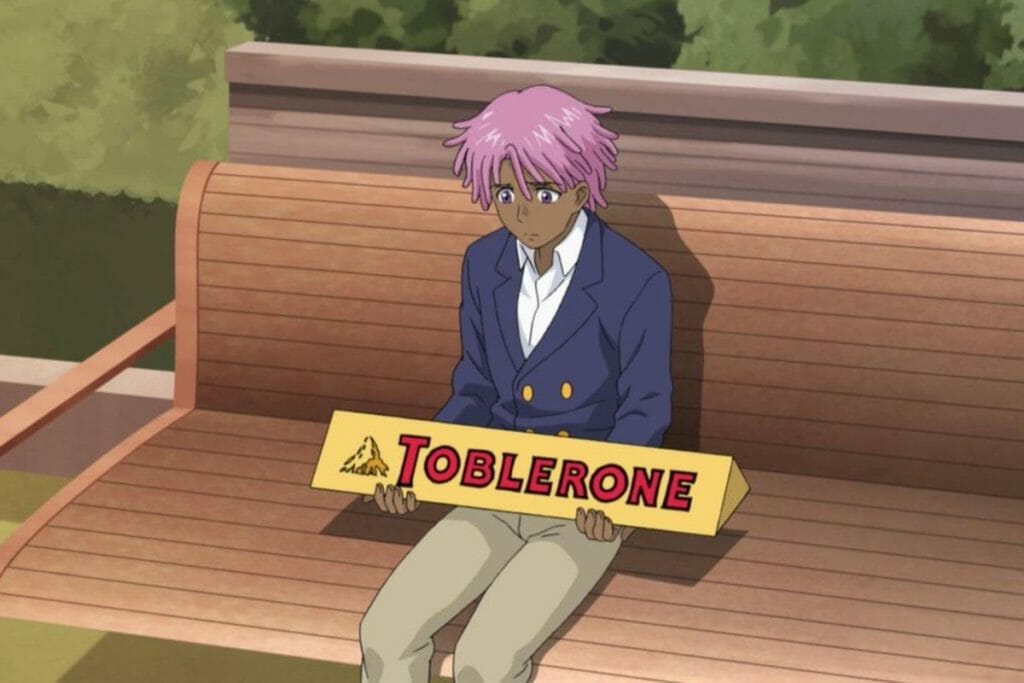
Kaz Kaan
Having first debuted in the fall of 2017, Neo Yokio is a recent addition to the anime landscape. Set in an alternate version of current-day New York, it explores the dichotomous complexities of spirituality and high society. Featuring the voice talents of new and old American personalities such as Jason Schwartzman, Desus and Mero, Susan Sarandon, and even Jude Law, the main character Kaz Kaan (voiced by Jaden Smith, who also produced the show) is a pink haired, heartbroken “Magisitocrat “ who spends his days intermittently sulking and demon hunting, all while looking fly in the midst of the madness.
The Netflix production is an inventive take on many tropes and supernatural subgenres of anime, making it an inventive love letter to the medium. It offers a world where a young Black man is both inherently wealthy and integral to the well-being of the world in which he lives, while also portraying him with an emotional capacity that could be described as almost sensitive, if not superficially brooding. The ability for a melanated character to be motivated by something other than tragic loss, or celestial crime, is a majorly positive step in allowing Black and POC characters to read as well developed persons on screen and not just foils to a subplot that doesn’t necessarily serve or need them.
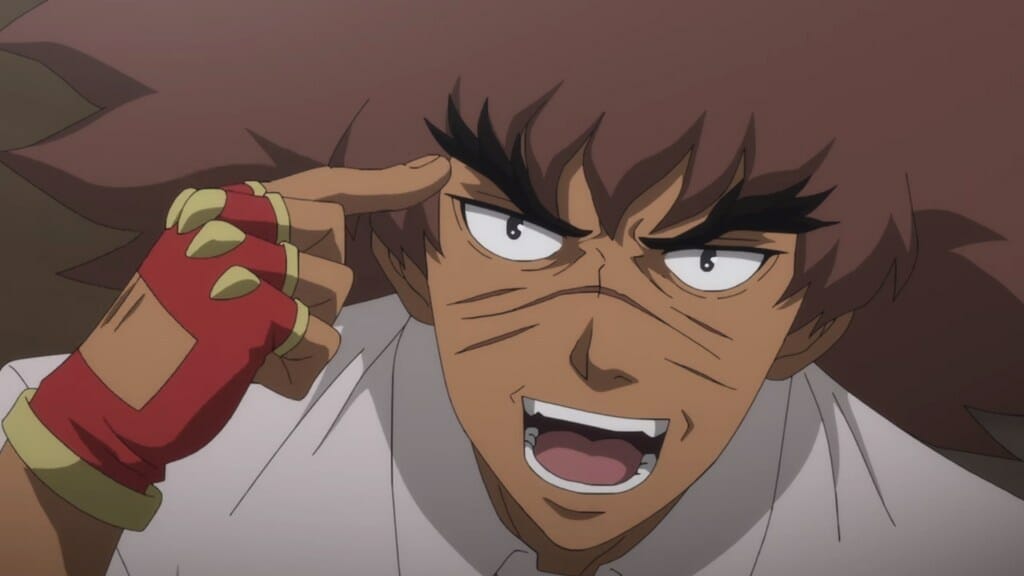
Philly the Kid
Written by LeSean Thomas, Canon Busters was originally an American fantasy comic book series that was adapted into a web animation series and released on Netflix in 2019. Following Philly the Kid, an immortal outlaw in the mecha world of Gearbolt, the plot of Canon Busters gives a lot of the same epic “on the run” energy as a Cowboy Bebop, while maintaining a pace and intrapersonal character dynamic all its own. Philly is also identifiably Black, with chocolate brown skin and matching afro to boot. The imagery of a Black man withstanding a barrage of bullets and beating death a thousand times over, then living to laugh about it, is something that may be eerily relevant and empowering in these tumultuous days of racial unrest and BLM protests.
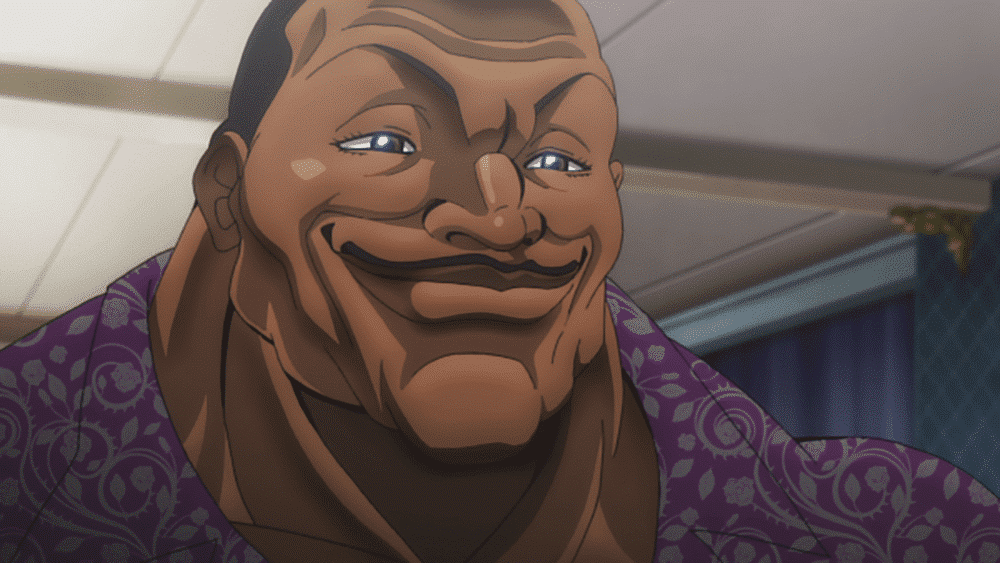
Biscuit Olivia/Oliver
Biscuit Olivia, also known as Oliver, also known as “The Unchained,” is an Afro-Cuban fighter and Special Forces Operative from Baki the Grappler. The manga launched in 1991, though Biscuit’s first animated appearance was not until ten years later in Grappler Baki Maximum Tournament. A rich history sees this supporting character as not only one of the strongest men in the series, but also one of the most skilled, refined and educated.
Though he is imprisoned, as his moniker “The Unchained” implies, he is a self actualized character who is free and always smiling, though his circumstances may be less than appealing. Biscuit also possesses respect in abundance, as he has the reverence not only of his co-workers at the Arizona State Prison (where he is a pseudo prisoner), the United States Government, and even the Martial Art Masters to whom he is still but a student.
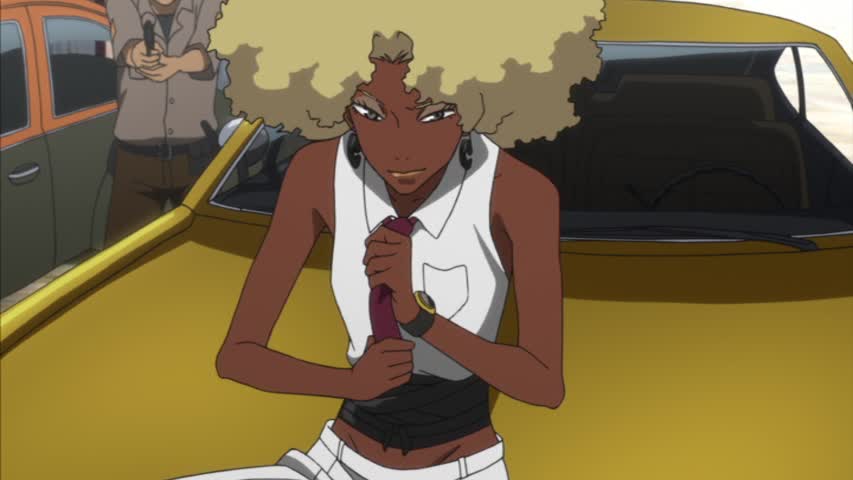
Atsuko Jackson
Atsuko Jackson is an orphan turned vigilante from the vibrant 2008 anime series Michiko & Hatchin. Sometimes referred to as “Jambo” (which means “Black One”) both endearingly and antagonistically by series’ namesake Michiko Malandro, Atsuko is an Afro Brazilian woman with a platinum blonde curly coif, whose badassness is only one-upped by the series’ other Black heroine, Michiko.
While little is known about Atsuko’s origins, we do learn that she vacillates between wanting to capture Michiko and wanting to save her from the consequences of her actions, which ultimately carry a fate of imprisonment. Atsuko’s need to arrest Michiko borders on obsession, but the two share a balanced, enthralling cat-and-mouse dynamic that casts them both as layered, motivated characters.
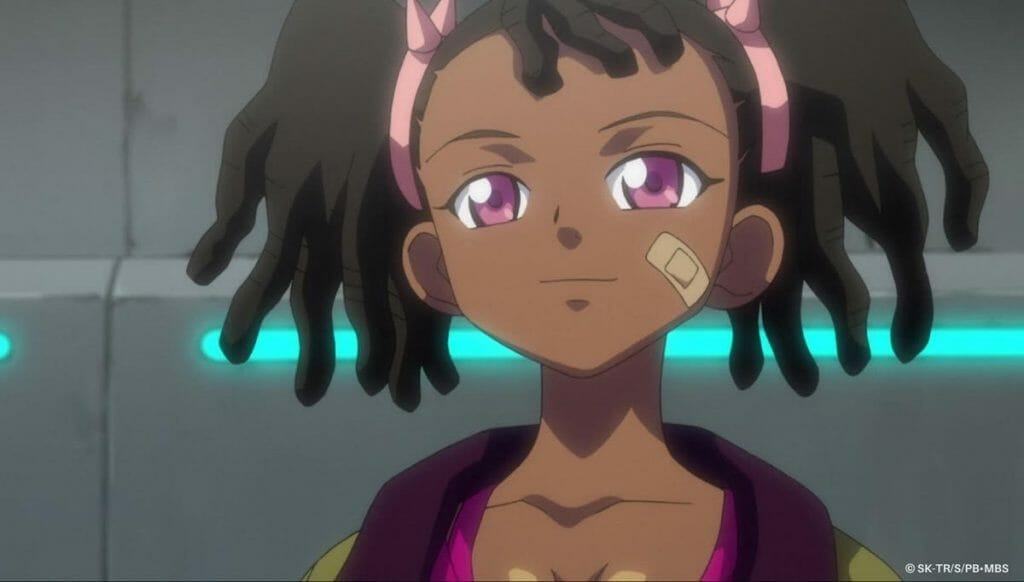
Miyuki Ayukawa
Miyuki Ayukawa is a super-intelligent, capable, and adorable supporting character in 2009 series Basquash! She’s a semi-love interest to lead character Dan in the series, which revolves around basketball, mechanical “BigFoots”, and just a taste of teen angst.
As the team mechanic (and often voice of reason) she is essential to not only the storyline of the show itself, but the lives of the characters themselves. After all, there would quite literally be no form or function of one of the show’s main elements (The BigFoots) without her. A win for the mecha and adventure genres of anime, Miyuki is certainly the perfect representation of the Black Girl Magic that is such a viable and consistent staple of many people’s lives.
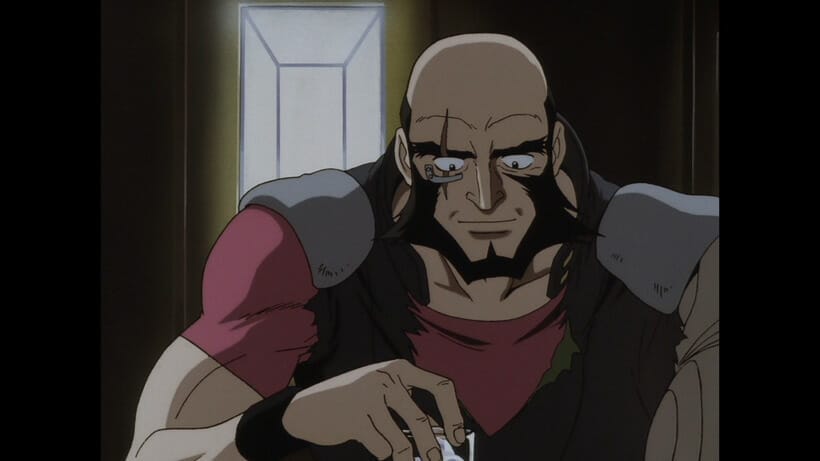
Jet Black
1998’s Cowboy Bebop is, without a doubt, one of the core staples of anime Classics that awakened American fanfare. A space opera that follows a team of intergalactic bounty hunters with a storyline and musical score that are equally jazzy, the action packed series is never at a loss for compelling characters who are the epitome of mystery and intrigue.
Enter Jet Black.
Though Jet may not be as visibly phenotypically Black as others mentioned throughout the list, he is indeed a Black man who has a love for the Blues, his family, and a woman named Alisa. He also goes by the alias the “Black Dog”. Although he’s a bit torn up (he boasts a mechanical left arm and scarred left eye), he leads a ragtag group of bounty hunters on his ship, the Bebop. Jet carries with him a host of memories and traumas from his own life, though none of those experiences have served to make him a villain. Rather, he stays grounded throughout his space voyage by following a strong moral compass, and of course, the love and company of his shipmates turned friends.
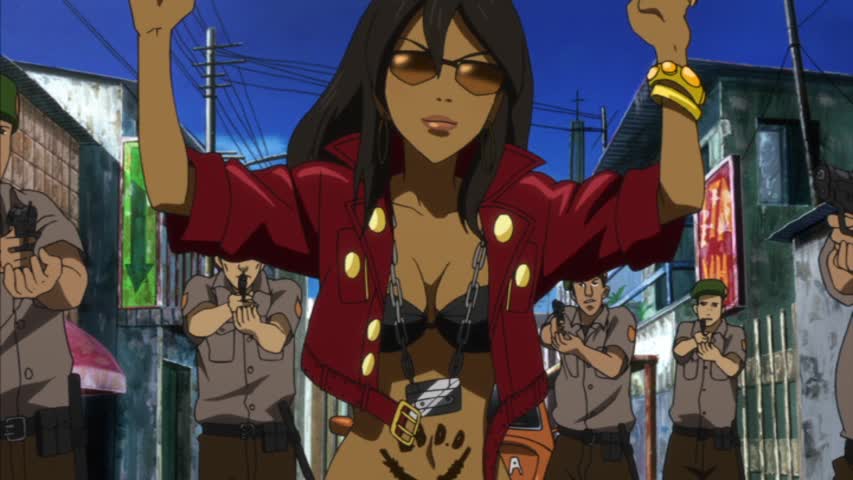
Michiko Malandro
Mentioned earlier in the list, Michiko Malandro is definitely one of the sexiest anime heroines to grace the medium. And while gorgeous, she’s also undeniably intelligent and slightly ruthless. A foxy mercenary of the Brazilian Favelas in which she resides, this criminal is a do-gooder at heart. This is evidenced most by her love and protection of the golden haired orphan Hatchin, whom she no doubt sees much of herself in.
Constantly on the run from a variety of forces and always evading escape, this caramel complected lead serves as a great emblem of the diversity anime can house at its best and brightest. Furthermore, the story of Michiko & Hatchin is a great example of how anime can be used to articulate a vast array of legends and environments, be they based in Japan or not.
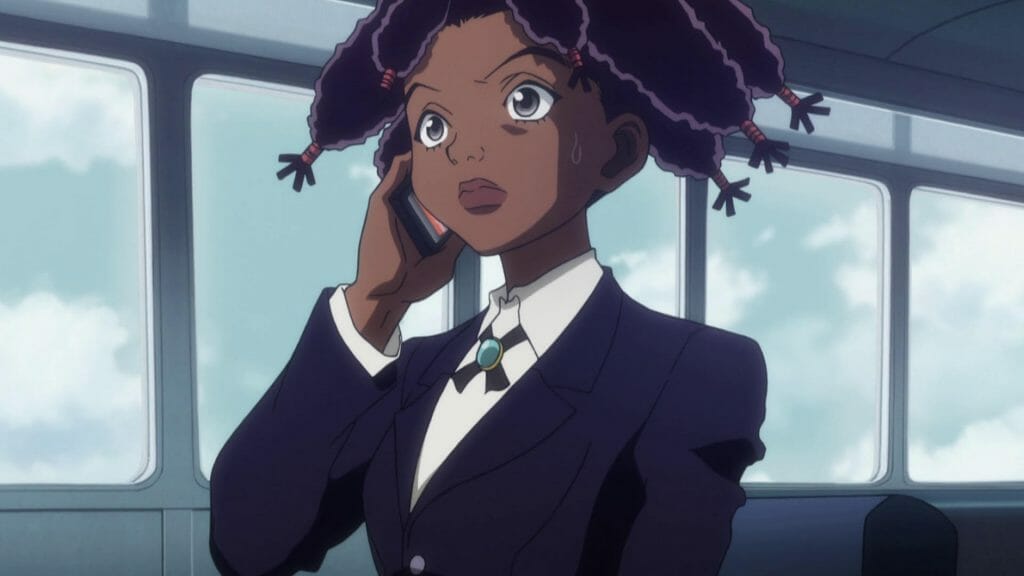
Canary
Hunter x Hunter is, by far, one of the most popular and beloved anime series on the market today. Based on the manga released in 1998, the cast of the show has captured the hearts of millions across the world and across multiple adaptations. One of the standout roles within the show is Canary, a young Black girl who is a fiercely loyal and protective Guardian of the Zoldyck family. Her appearance has changed a bit over the years and between adaptations, but her thick hair, petite facial features and stern yet gentle resolve have remained as defining traits of the one who refuses to let anything past her.
As an orphan, there isn’t much known about Canary’s origins, other than she was born in Meteor City. Still, she displays unwavering traits of loyalty, discipline, and fierce protectiveness. These strengths have gone on to become major reasons as to why so many love and cherish Canary’s character. In her, they truly feel seen.
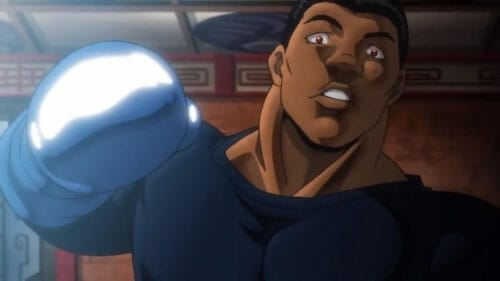
Muhammad Ali
Baki The Grappler follows a teenage boy who comes of age and takes his place as one of the world’s many Strong Men. Though mighty, there can only truly be one “Strongest Man Alive.” As a result, these characters clash in brutal battle royales that are unlike much of what was showcased in popular battle anime series from the same era. Baki also doesn’t know that his own father, nicknamed “The Ogre” by friend and foe alike, is the person who currently occupies that position.
And that’s where things get tricky.
Enter Muhammad Ali. The portrayal of Ali is both triumphant and tragic, as he is noted as the only fighter for whom The Ogre ever had any respect. While the series holds no bars when displaying Ali in his final form, it also paints a moving homage in his inclusion as one of the greatest fighters to have ever graced the Earth. This tribute of sorts and mention of a real Black person in anime is as unique as it is inspiring, and the fact that Ali will forever be immortalized and introduced to younger audiences for generations to come is something that can’t be understated or overlooked in the history of Black and POC representation in the medium.
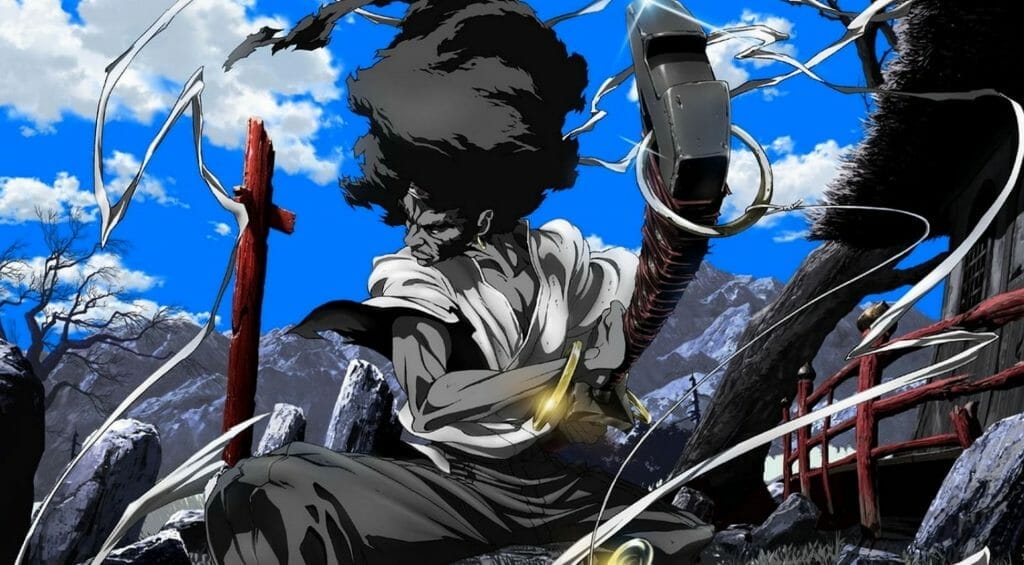
Afro Samurai
The final submission on the list is none other than the titular lead of Afro Samurai. This groundbreaking anime was originally released as a manga in 1998 and adapted for the screen in 2007. Voiced by Samuel L. Jackson in the English dub, Afro Samurai follows young Afro as he fights tooth and blade to maintain the Number 2 headband and avenge the death of his slain Father. Afro’s father was the original owner of the coveted Number 1 headband, which grants godlike powers to the greatest warrior in the world. This gory and stylish slashfest is anchored by the genius musicality of the RZA and has achieved many awards and much critical acclaim. The franchise has spawned sequels, more manga, a video game, and potentially even a movie (though this has been in talks for years now) and is beyond a shadow of a doubt, one of the most seamless representations of Blackness on screen while doing a phenomenal job of meshing the worlds of traditional anime tropes, Kung Fu films, and Hip Hop culture together.
Though this list is in no way comprehensive and will undoubtedly continue to grow, characters such as the aforementioned have and continue to help Black people imagine ourselves in worlds where we are celebrated, acknowledged and valued as we are, for who we are. The future will certainly remain bright for the anime community globally— as long as multicultural and Black characters continue to find a place in the cultures’ colorful worlds and storylines.


